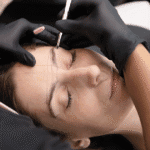Laser hair removal has gained immense popularity as a safe and effective method for achieving smooth skin, but along with its rise, misconceptions about its safety, particularly regarding cancer risk, have also emerged. In this blog, we will address these misconceptions by exploring the importance of choosing a qualified provider, debunking myths surrounding LHR, and understanding safety standards and regulations.
Choosing a Qualified Provider
The key to safe and effective laser hair removal begins with selecting a qualified provider. It is crucial to choose a licensed dermatologist or trained professional who has experience in using laser devices. Qualified providers adhere to strict protocols for patient safety and follow guidelines set by regulatory bodies. Before undergoing treatment, ensure that your provider conducts a thorough consultation to assess your skin type, medical history, and suitability for LHR.
Debunking Myths: Separating Fact from Fiction
One of the most prevalent myths surrounding LHR is its supposed link to cancer. Contrary to popular belief, numerous scientific studies have demonstrated that the light emitted during laser hair removal is non-ionizing, meaning it does not have the potential to damage DNA or cause cancer. The laser targets melanin in the hair follicle, bypassing deeper layers of skin where cancerous changes can occur. Additionally, reputable studies and medical organizations affirm that there is no credible evidence linking LHR to skin cancer or any other form of cancer.
Safety Standards and Regulations
Safety standards and regulations play a pivotal role in ensuring the safety of laser hair removal procedures. Regulatory bodies such as the FDA (Food and Drug Administration) in the United States and similar agencies worldwide impose strict guidelines on the use of medical laser devices. These regulations encompass device safety, operator training, treatment protocols, and patient care standards. Before undergoing LHR, inquire about the certifications and qualifications of the provider, as well as the type of laser device being used.
In conclusion, laser hair removal is a safe and effective procedure when performed by a qualified provider using approved devices and protocols. By dispelling myths and understanding the scientific basis behind LHR, individuals can make informed decisions about their cosmetic treatments. Always prioritize safety by choosing a reputable provider who adheres to stringent safety standards and regulations. Remember, accurate information is key to dispelling misconceptions and embracing the benefits of laser hair removal for smooth, hair-free skin.








